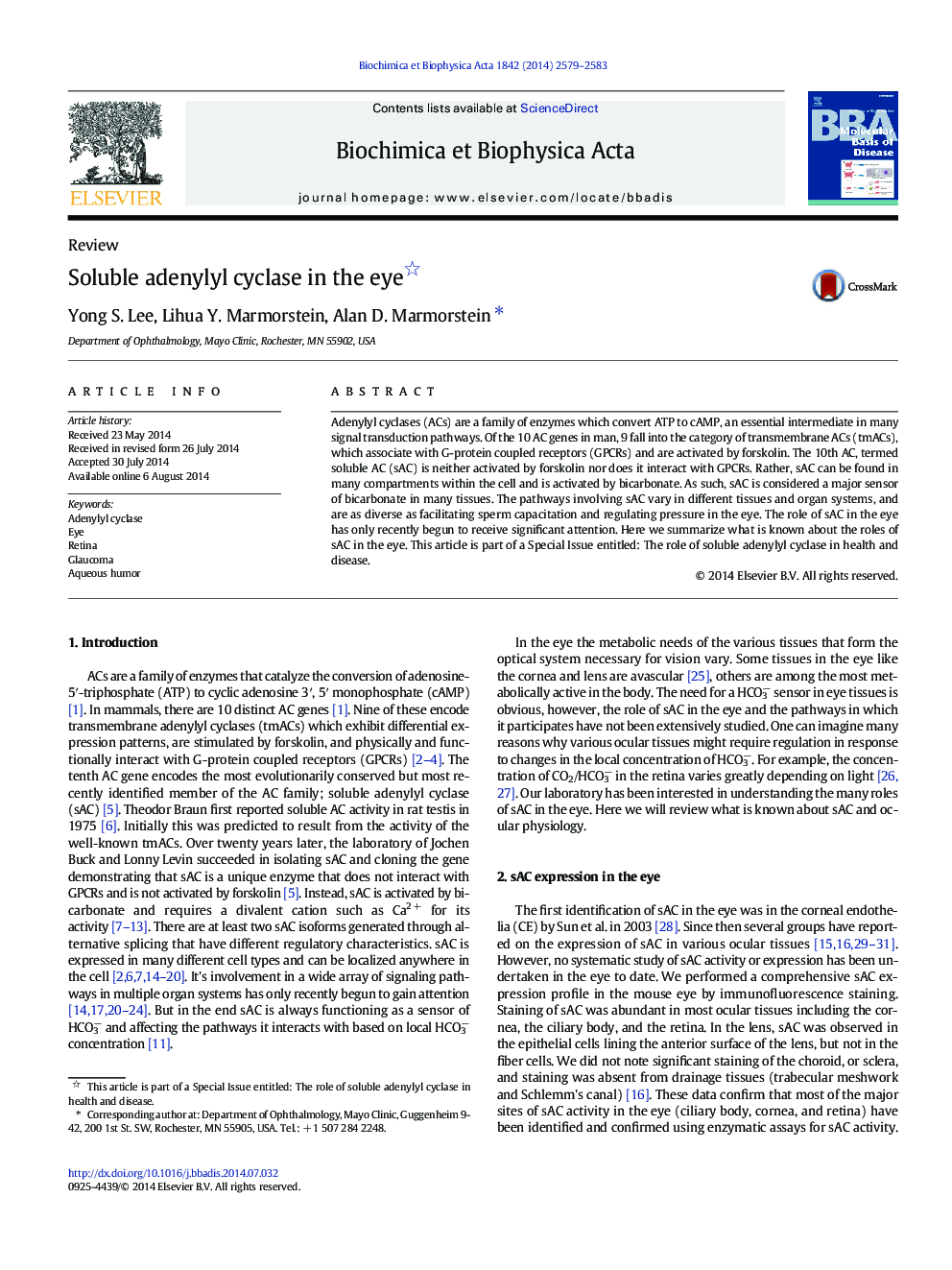| Article ID | Journal | Published Year | Pages | File Type |
|---|---|---|---|---|
| 1904635 | Biochimica et Biophysica Acta (BBA) - Molecular Basis of Disease | 2014 | 5 Pages |
•We discuss the roles of soluble adenylyl cyclase (sAC) in the eye.•We review the role of sAC in cell survival.•We review the novel role of sAC in the regulation of aqueous humor dynamics.
Adenylyl cyclases (ACs) are a family of enzymes which convert ATP to cAMP, an essential intermediate in many signal transduction pathways. Of the 10 AC genes in man, 9 fall into the category of transmembrane ACs (tmACs), which associate with G-protein coupled receptors (GPCRs) and are activated by forskolin. The 10th AC, termed soluble AC (sAC) is neither activated by forskolin nor does it interact with GPCRs. Rather, sAC can be found in many compartments within the cell and is activated by bicarbonate. As such, sAC is considered a major sensor of bicarbonate in many tissues. The pathways involving sAC vary in different tissues and organ systems, and are as diverse as facilitating sperm capacitation and regulating pressure in the eye. The role of sAC in the eye has only recently begun to receive significant attention. Here we summarize what is known about the roles of sAC in the eye. This article is part of a Special Issue entitled: The role of soluble adenylyl cyclase in health and disease.
